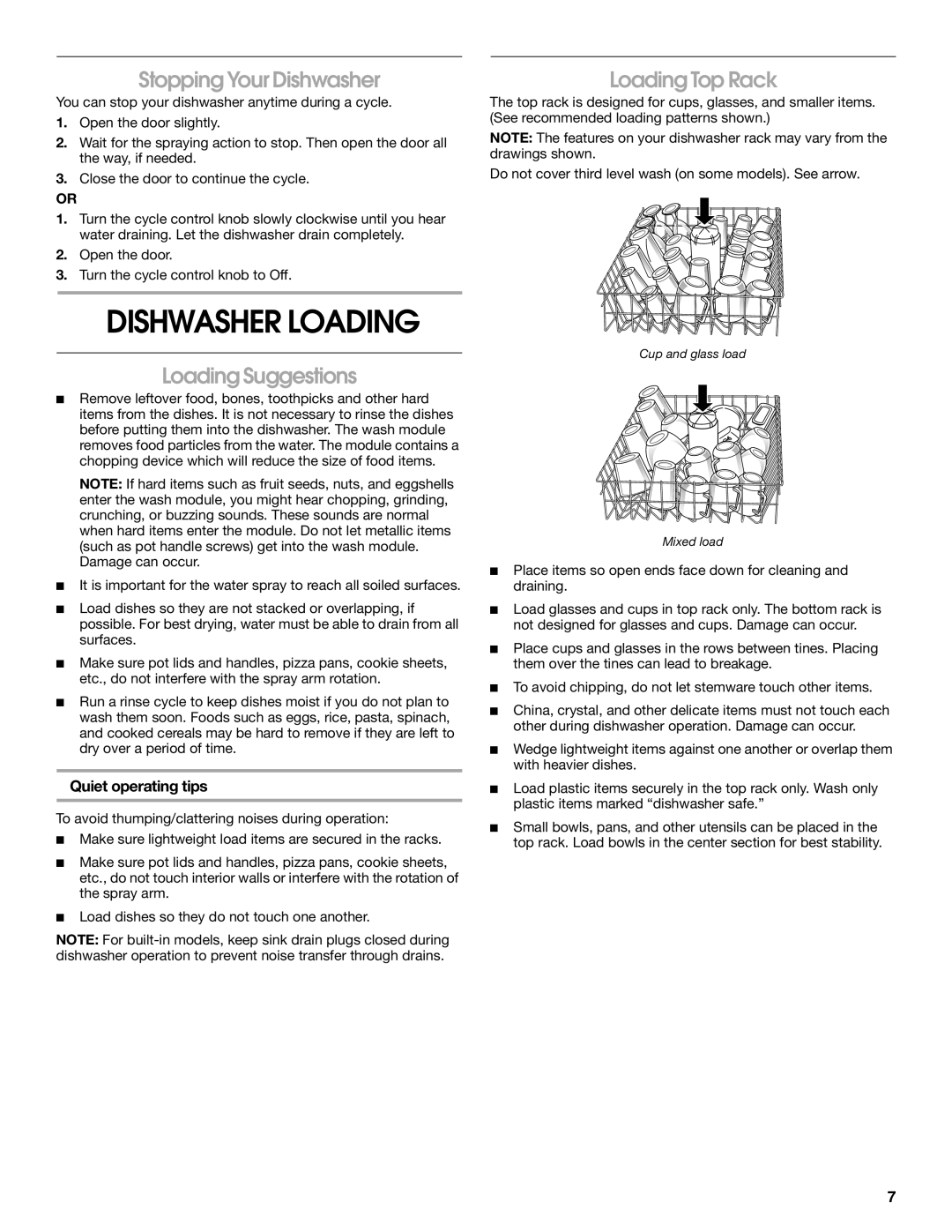
Stopping Your Dishwasher
You can stop your dishwasher anytime during a cycle.
1.Open the door slightly.
2.Wait for the spraying action to stop. Then open the door all the way, if needed.
3.Close the door to continue the cycle.
OR
1.Turn the cycle control knob slowly clockwise until you hear water draining. Let the dishwasher drain completely.
2.Open the door.
3.Turn the cycle control knob to Off.
DISHWASHER LOADING
Loading Suggestions
■Remove leftover food, bones, toothpicks and other hard items from the dishes. It is not necessary to rinse the dishes before putting them into the dishwasher. The wash module removes food particles from the water. The module contains a chopping device which will reduce the size of food items.
NOTE: If hard items such as fruit seeds, nuts, and eggshells enter the wash module, you might hear chopping, grinding, crunching, or buzzing sounds. These sounds are normal when hard items enter the module. Do not let metallic items (such as pot handle screws) get into the wash module. Damage can occur.
■It is important for the water spray to reach all soiled surfaces.
■Load dishes so they are not stacked or overlapping, if possible. For best drying, water must be able to drain from all surfaces.
■Make sure pot lids and handles, pizza pans, cookie sheets, etc., do not interfere with the spray arm rotation.
■Run a rinse cycle to keep dishes moist if you do not plan to wash them soon. Foods such as eggs, rice, pasta, spinach, and cooked cereals may be hard to remove if they are left to dry over a period of time.
Quiet operating tips
To avoid thumping/clattering noises during operation:
■Make sure lightweight load items are secured in the racks.
■Make sure pot lids and handles, pizza pans, cookie sheets, etc., do not touch interior walls or interfere with the rotation of the spray arm.
■Load dishes so they do not touch one another.
NOTE: For
Loading Top Rack
The top rack is designed for cups, glasses, and smaller items. (See recommended loading patterns shown.)
NOTE: The features on your dishwasher rack may vary from the drawings shown.
Do not cover third level wash (on some models). See arrow.
Cup and glass load
Mixed load
■Place items so open ends face down for cleaning and draining.
■Load glasses and cups in top rack only. The bottom rack is not designed for glasses and cups. Damage can occur.
■Place cups and glasses in the rows between tines. Placing them over the tines can lead to breakage.
■To avoid chipping, do not let stemware touch other items.
■China, crystal, and other delicate items must not touch each other during dishwasher operation. Damage can occur.
■Wedge lightweight items against one another or overlap them with heavier dishes.
■Load plastic items securely in the top rack only. Wash only plastic items marked “dishwasher safe.”
■Small bowls, pans, and other utensils can be placed in the top rack. Load bowls in the center section for best stability.
7
